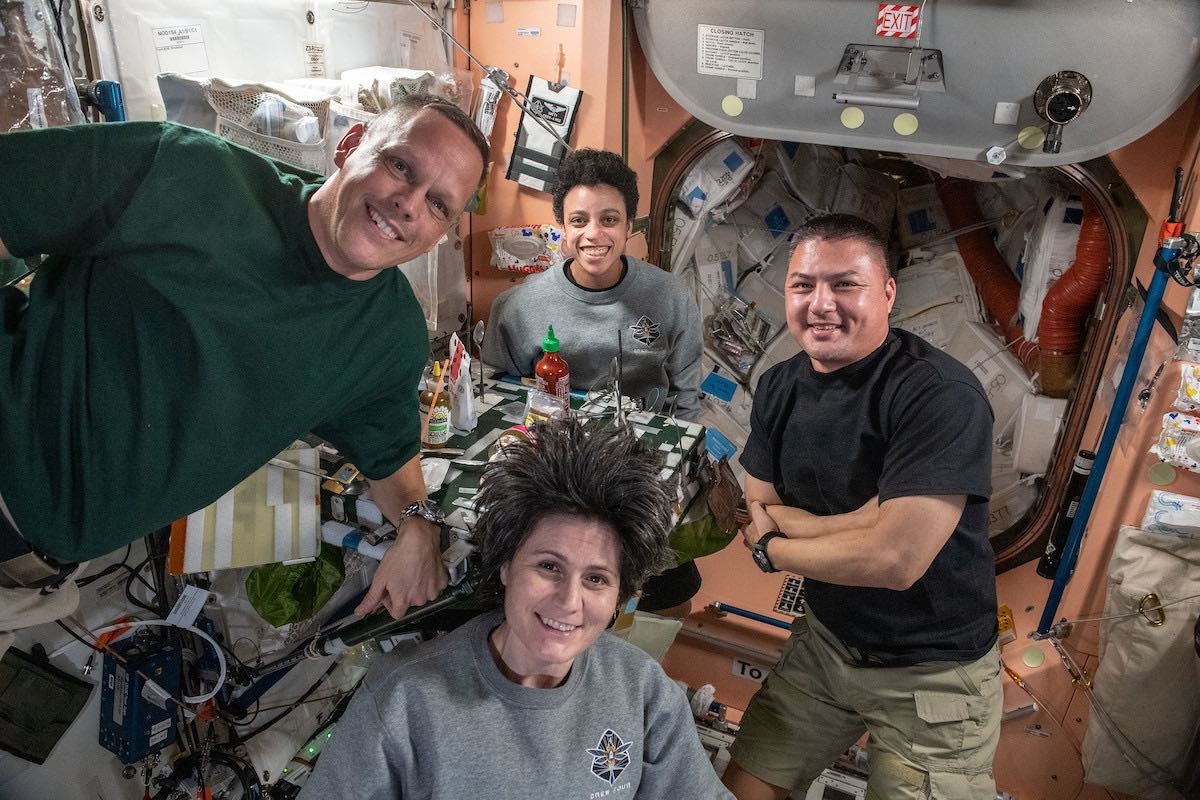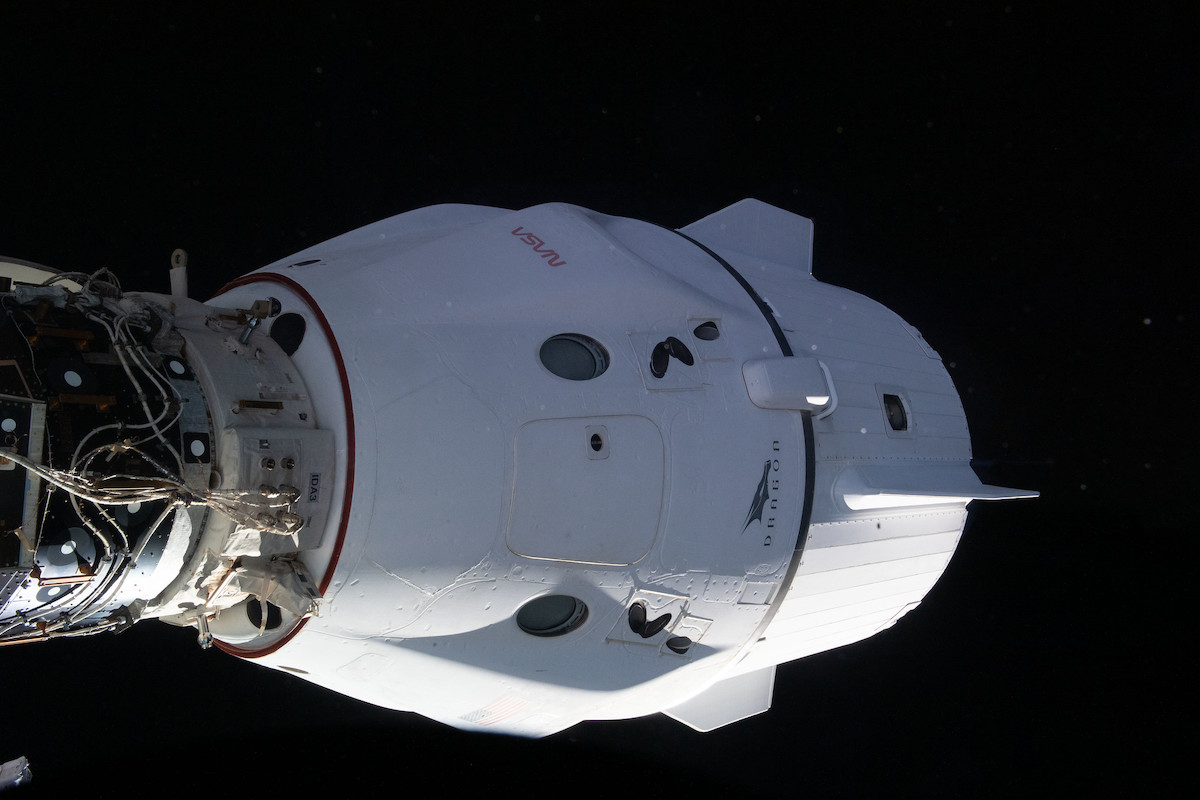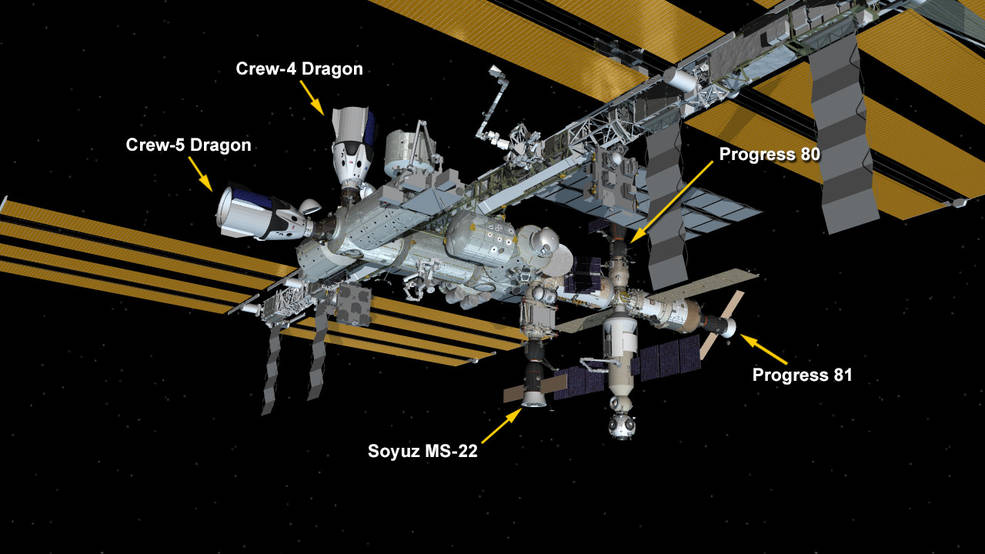EDITOR’S NOTE: Updated Oct. 13 with weather delay.

Four astronauts are preparing to ride a SpaceX Dragon crew capsule from the International Space Station back to Earth this week to close out a nearly six-month expedition, targeting splashdown off the coast of Florida. NASA and SpaceX officials waved off return opportunities Wednesday and Thursday due to unfavorable weather in the splashdown zones.
Mission managers delayed the return of the Crew-4 mission from Wednesday and Thursday due to unfavorable weather in the splashdown zones off the coast of Florida. SpaceX has seven areas in the Gulf of Mexico and the Atlantic Ocean available for Dragon splashdowns.
The next opportunity to undock the Dragon capsule is Friday at around 11:35 a.m. EDT (1535 GMT), potentially setting up for a splashdown late Friday afternoon. But NASA and SpaceX officials continue to evaluate weather and sea conditions off Florida’s coast before committing to re-entry.
When officials are satisfied weather is acceptable for splashdown, SpaceX’s Dragon Freedom spacecraft will ferry its four-person crew for the trip home, concluding NASA’s Crew-4 mission that began April 27 with a predawn blastoff from Kennedy Space Center in Florida on top of a Falcon 9 rocket. The mission is the fourth operational crew rotation flight to the space station on a SpaceX Dragon spacecraft, operating under a multibillion-dollar contract with NASA.
“We launched in late April, we’ve been up here for almost six months,” said Kjell Lindgren, commander of the Crew-4 mission. “We’ve done a lot of science, taken in some amazing views, but now we’re excited to get home to our families.”
NASA astronaut Bob Hines, mission specialist Jessica Watkins, and European Space Agency astronaut Samantha Cristoforetti will accompany Lindgren for the return trip to Earth.
The four crew members will put on their custom-made SpaceX-built pressure suits and take their seats inside the Dragon spacecraft before undocking from the space station. After the astronauts close hatches and ensure a good pressure seal in the docking mechanism with the space station, ground teams at SpaceX mission control in California will send a command for the Dragon Freedom capsule to open hooks and back away from the complex.
The Dragon spacecraft will fire Draco thrusters to depart the vicinity of the space station. Before re-entry, the crew capsule will jettison its disposable unpressurized trunk section, which holds the ship’s power-generating solar arrays. The trunk will remain behind in orbit before eventually falling back into the atmosphere and burning up.
Flying on autopilot, the pressurized crew capsule will ignite four of its Draco thrusters for a deorbit burn lasting more than 16 minutes. The braking maneuver will allow the Dragon Freedom spacecraft to drop out of orbit. Earth’s gravity will the capsule through the atmosphere, and temperatures outside the spacecraft will build up to 3,500 degrees Fahrenheit (more than 1,900 degrees Celsius).
Two drogue parachutes will deploy to slow the capsule’s descent, then four orange-and-white main chutes will open to allow the capsule to splash down at a relatively gentle 15 mph (24 kilometers per hour).
A SpaceX recovery ship is on station at the splashdown zone to lift the Dragon Freedom capsule from the sea. Once the spacecraft is on the deck of the privately-owned recovery vessel, teams will help the astronauts out of the capsule to begin re-acclimating to gravity.

The return to Earth for the Crew-4 astronauts will wrap up a busy few weeks of crew rotations on the space station. A Russian Soyuz spacecraft delivered NASA astronaut Frank Rubio and cosmonauts Sergey Prokopyev and Dmitry Petelin to the station Sept. 21, followed a week later by the departure of an outgoing three-man Soyuz crew.
NASA’s Crew-5 mission launched Oct. 5 on SpaceX’s Dragon Endurance spacecraft, which ferried commander Nicole Mann, pilot Josh Cassada, Japanese astronaut Koichi Wakata, and Russian cosmonaut Anna Kikina to the space station.
The new crew members will live and work aboard the station until early next year, with Prokopyev, Petelin, and Rubio slated to return to Earth in March on their Soyuz spacecraft. The Crew-5 mission is scheduled to wrap up in February with a splashdown off the coast of Florida, a few days after the launch and docking of Crew-6, the next SpaceX crew flight.
Jessica Watkins, a first-time space flier, said the Crew-4 astronauts worked on experiments and technology demonstrations on the station that are designed to help prepare for future voyages to the moon and Mars. Those included testing a vest to protect crew members against dangerous radiation during solar storms, and an experiment investing how to grow plants in microgravity without using soil, which could help people living in space sustain themselves with less reliance on cargo shipments from Earth.
“It’s been awesome to be able to walk into the Columbus module and smell the smell of leaves growing, of plants growing,” Watkins, a geologist who previously worked on NASA’s Mars rover missions, said in a press conference Monday. “It is very unique, and just kind of really fulfilling and encouraging, and to be able to grow peas and tomatoes with our own two hands has been amazing.”
Bob Hines, pilot of the Crew-4 mission, told reporters Monday in a virtual press conference that he is looking forward to enjoying ice cream and pizza after returning to Earth.
“But above all, it’s seeing family and friends when we get home,” said Hines, 47, a former U.S. Air Force fighter pilot and test pilot. “Our families make such big sacrifices for us to be able to come up here and do this amazing thing to benefit humanity.”

Hines is wrapping up his first mission in space. So far, he counts the the experience of launch and views out the window as highlights. But he’s looking forward to the return trip back through the atmosphere.
“Obviously, we’ve been up here in microgravity for six months, so as we start feeling those Gs come on, it’s going to feel even more extreme than it would in a normal day,” Hines said. “So I think that’s going to be really exciting. I think seeing the plasma out the window is going to be really awesome, that orange flow as it starts setting in inside the cabin is really exciting.
“Then getting under the main parachutes and splashing down in either the Atlantic or the Gulf of Mexico is going to be awesome,” Hines said. “I think when that hatch pops open and we feel that first breath of humid air, it’s going to be pretty refreshing.”
Email the author.
Follow Stephen Clark on Twitter: @StephenClark1.
